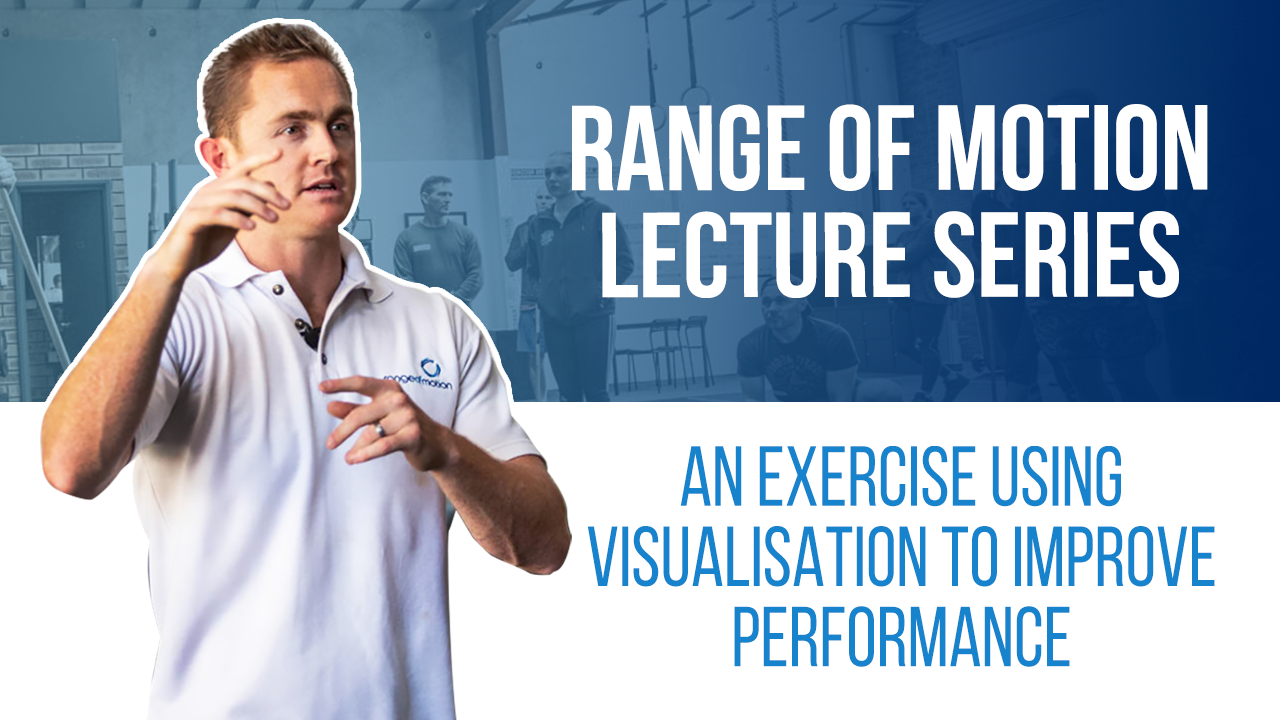Transcribed from video:
– Okay, what I want you to do guys is everyone close your eyes. And I’m going to just take you through a visualisation of hitting a snatch. All right, you’re standing a metre behind the bar. And as you know, you have to have your pre-lift routine. The chalk bucket is down by your left foot. You can feel the tightness of your lifting shoes. You know when you pull the Velcro over and it feels tight and uncomfortable on your foot. You guys can actually feel that in your feet now, hey. You can feel that tightness on the feet. You bend down and you pick up a block of chalk. You swipe it from your palm out to the fingers on the left hand. From the palm, out to your fingers on your right hand. It’s dry and you can feel it sucking out moisture out of your hands. You put some on the inside of your thumb because you know you’re going to hook grip for a little bit of extra grip there. You push the bucket away, take a big breath, and you clap your hands, and you feel some of that chalk dust sort of go into your lungs as you do. You can almost taste that chalk that’s on your hands. You stand up tall, take a big deep breath. You step forward, left foot, right foot, left foot. And you feel the hard, cold bar contact your left shin. Right foot, the bar contacts your shin. You look down on the bar, you take a big deep breath. You put your left hand on. You wrap your thumb around the bar and then you clamp those fingers down over the thumb. You put your right hand on the bar, you clamp the fingers down over the thumb. Your hips are high, then you take a deep breath, you drop your hips down, feel the tension in your back. Your lats are engaged, it feels uncomfortable but tight. You know you’re ready to generate some power. Then the bar starts to move, you control it at first, ease that bar up off the ground, you control it to the knee, and you feel the hamstrings active. The bar doesn’t feel heavy, you know there’s a lot of weight on the bar, but it’s moving well. The bar gets to below the knee, then to above the knee. You’re still over the bar, your lats are on drawing the bar in towards you, your hamstrings are firing. You start to draw it up the legs, it hits that power position in the hip, and then you extend, you lock, you drive hard through the knee to get that bar moving vertically. You feel the weight of the bar as you pull yourself underneath that bar. You land in the bottom and it’s one of those ones that is just perfect, the weight is not in your toes, it’s not in your heels, it’s there in that mid-foot. And you know no matter how much weight is on that bar you can stand it up. Your chest is up, your legs are feeling strong, you drive strong out of that squat, actively pressing on that bar until you stand up, and then you drop it, eyes open.





